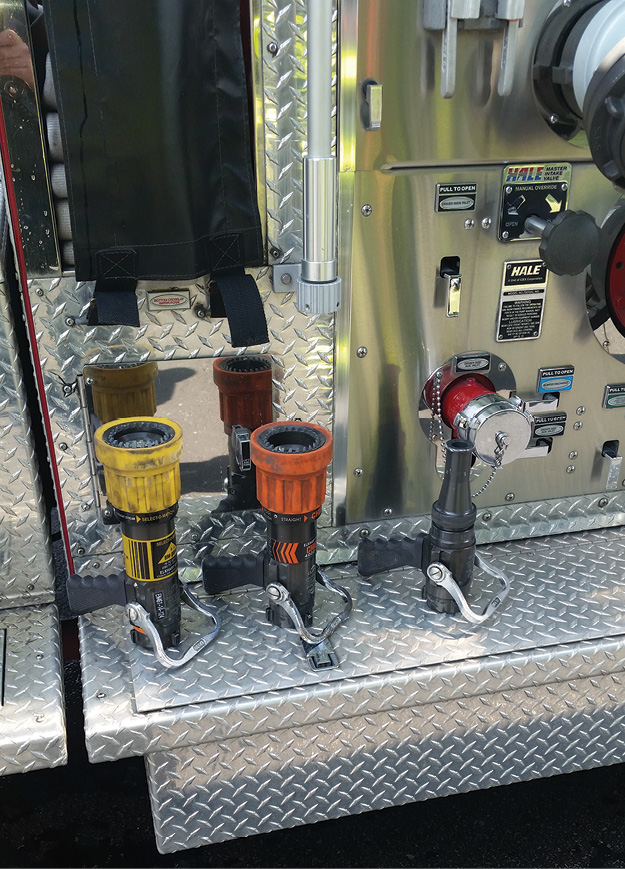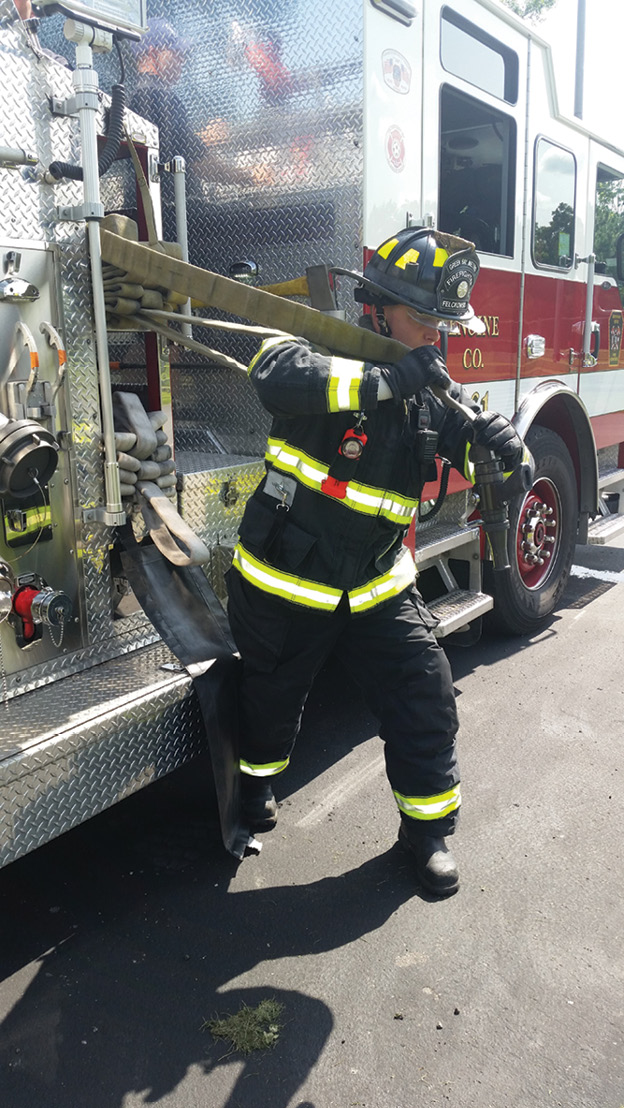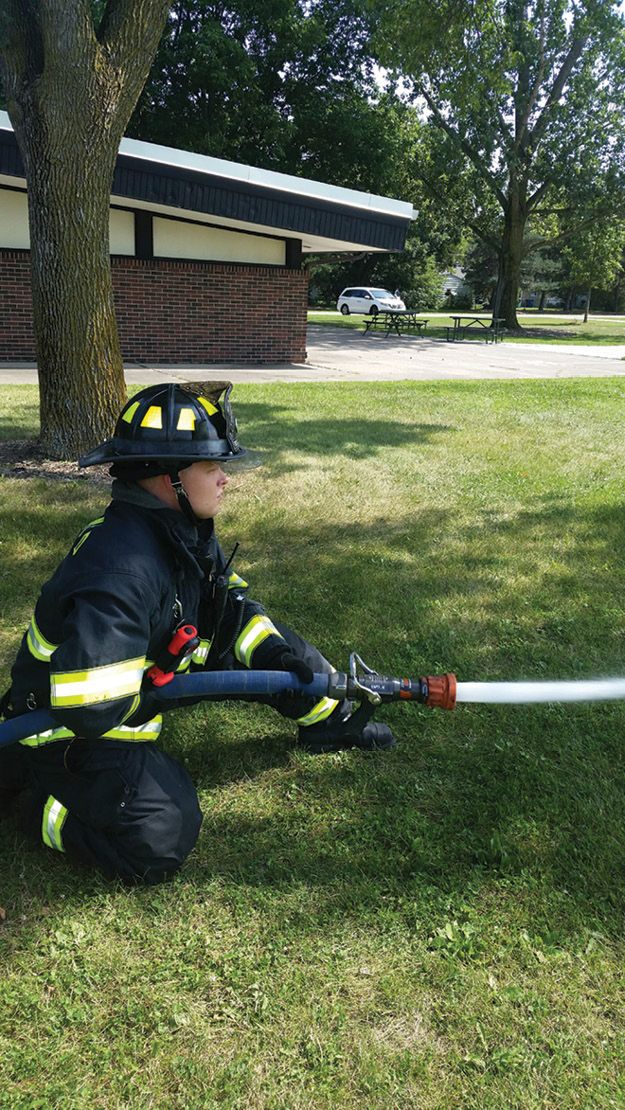
By Anthony Piontek
You must complete many tasks on the fireground to achieve success. Whether you are a boss, a driver, or a firefighter, the team is counting on all team members to perform their specific duties to the most efficient and effective level possible. Sometimes you may fall short; you are human. But when it happens, there is a perfect opportunity to become better at what you do. When it comes to engine work, it’s pretty straightforward: water on the fire. But, that statement involves so many complicated things, and you must coordinate them with other companies’ work to be completely effective. The following is a list of essential engine company tasks; it is not all encompassing or fully explained, but it’s a starting point for working on those assignments that can affect your engine company’s efficiency and effectiveness.
Understand Your Weapon
I am opening a Pandora’s box. There are hundreds of articles and even more subtopics on this subject alone in the periodicals. In a nutshell, you should understand the parts of an attack line, how they function, their capabilities, and their drawbacks. Operating the engine itself is a training mountain; in my opinion, you cannot train on it enough, especially under stressful situations that simulate a fireground.
Let’s look at the line itself. You must thoroughly understand the attack package, from the coupling at the engine to the terminal point of the fire stream. What size is the line? What is its length, flow, friction loss, difficulty of maneuverability, and personnel needs? What about the nozzle—its type, operating pressures and flow, bail/combination features, and nozzle reaction? How is the line loaded, pulled, and advanced, and how does it perform under different scenarios? Digging deeper, is it the best line for the situation? Should you try a different load or length for your district or a different nozzle? Should you work from the rear bed instead of a crosslay? Do you thoroughly understand and think about the line’s ability to provide the proper flow to the desired location while providing optimum mobility?

(1) This engine has three nozzles: (from left to right) automatic, fixed gallonage, and smooth bore. (Photos by author).
Preconnects vs. Static Stretches
Let’s begin with stretch estimations. Two items come into play when estimating a hose stretch—the lead out and the operating line. The lead out is the length of hose needed to get from the engine to the entrance of the structure. There are ways to figure it out; some are set, as in setbacks in a development area. Standard residential lengths can be from 20 to hundreds of feet, based on your district; but areas should be somewhat similar as they are developed within a community. Know these distances.
Other considerations include distances in parking areas: Side-by-side parking necessitates a length for every five spaces; for parallel parking, it’s a length for every two spaces. Garage doors are typically nine feet wide, say 10; every five feet is a length. Garden-style or center-hall two-bedroom apartments are typically 25- × 25-foot interior units, so you an easily estimate every other patio door or breezeway. The operating length is a bit more algebraic. Length of the building + width of the building + 25 feet for operation on the fire floor and an additional 25 feet for every floor up or down in elevation. Example: 1,500-square-foot ranch (sq. ft.) (30 feet × 50 feet) with a fire anywhere on the living floor would be (L 50 + W 30 + OF 25 = 105). Add that to a 60-foot setback, and you will need 165 feet of hose to operate.
How about a two-story, 2,400-sq.-ft. residential with fire on the second floor? Using the formula above, the total would be L 40 + W 30 + OF 25 + up 1 floor 25 = 120; the same 60-foot setback would put you at 180 feet.
Using similar numbers, especially paired with your response district’s needs, you can come up with some common values for your preconnected lines. An 1,800- to 2,000-sq.-ft. single-story or a 2,800- to 3,600-sq.-ft. two-story with up to a 60-foot setback is a preconnect fire. You can look at each part of the stretch to change the formula to fit your area: longer setback = smaller structure; larger structure = shorter setback. Practicing these estimation techniques can give you a “preconnect snapshot,” a look that when you have it or, more importantly, when you don’t. The entire company knows you are preconnected or going with a static bed, a line set up to operate as long as you need to by creating a horizontal standpipe of hose for the lead-out stretch. Once you go to the static bed, estimation is critical. You have only what you take, drag, or carry with you. If you miscalculated, get the additional line to the working end so that it adds to the operating line and not the lead out! Practice long lead-out estimations with a rope bag, a range finder, or items listed above. Do it often. The more you practice, the better you get. Finishes on static beds are important also. Like the preconnects, they should fit your district’s needs and those of the department. There are too many to mention, but playing with different loads and finishes may surprise you. Some work better under certain circumstances.

(2) This firefighter is initiating a crosslay preconnected stretch. Used for a common setback of 70 feet, this 200-foot line is a standard pull for residential fires in this district, but it is chosen only after a size-up of fire conditions, apparatus placement, and a hoseline stretch have been completed. The initial line must achieve the triad of reach, flow, and mobility.
The Attack Team
Now that we have the line to the door, we need to discuss the positions and tasks of those positions on the line. The nozzle position operates the nozzle and keeps the line moving at a steady pace, operating when needed. You can use a number of stances; all of them work as long as you keep one knee off the floor. The idea behind any stance is to have a solid base from which to operate and control the line cradled under your arm, nozzle out front so that you can touch the tip with a gloved hand and can easily operate the nozzle controls, reducing nozzle reaction and fatigue. Practice as many stances as you can from the left and the right side, and find what is comfortable for you.

(3) A fully stretched 200-foot preconnect and a 70-foot setback: This is a common residential stretch in this district.
The backup position is the firefighter nearest and behind the nozzle position. The function here is to reduce nozzle fatigue for the nozzle position and advance the line. This is easily said but not easily done. It is the “Johnny Hustle” position. You operate from five feet behind the nozzle and everywhere else interior where you need to alleviate pinch or kink points if your engine company has fewer than four members, a tall order to say the least. Train to stay with the line and feed and stage the line to assist in the nozzle position’s advancing. Always be alert and oriented to interior conditions; you are also the watchdog for the nozzle position. This position should be held by a senior member of the company; usually, it is filled by the officer.

(4) Working from the rear static bed is sometimes beneficial. It usually allows for an expanded menu of lines—in this case, 1¾- and 2½-inch handlines of various lengths. Here, the firefighter is stretching a 250-foot length of 2½-inch hose outside the reach of a preconnected line on this engine. He is shouldering 100 feet of hose and is followed by a drag of 150 feet of lead-out hose—a common single-firefighter stretch for large or medium fire departments in this district. The operator has already prepared the new discharge and knows the length of the stretch from communicating with the firefighter or counting the remaining flakes on the bed.
The door position is the firefighter responsible for the advance and management of what starts as the lead out and everything that becomes the operating line as it passes through the threshold of the structure. This position makes or breaks a good stretch. Nearly every foot of line passes through this firefighter’s hands and into the structure! It’s not a glamorous job either, not like having the nozzle. But, there’s more to it. Alleviating problems, feeding just enough line—but not too much—for the interior positions, managing the entry/egress route, keeping accountability of operating crews, knowing how far the line is in the building, determining if additional staffing is needed to complete the stretch … you get the picture. Again, this is not a spot for the probie; there are too many things to potentially troubleshoot.

(5) One of the many nozzle positions. Vital points include keeping the nozzle out front and at arm’s length, the hand behind the coupling, and the hand/arm pinned to the side or hip. One knee is up; one knee is down, with a wide base for stability and range of motion. Whatever the stance, it should be comfortable to flow for up to one minute without fatigue and allow for the nozzle firefighter’s mobility and stability.
These are positions on the line, tasks that make the advance easier. If you have adequate staffing, fill them; if you don’t, consider filling them with second-due companies. If you have a long or difficult advance, consider adding personnel and having multiple backup positions staged at interior pinch points to assist with the advance.
The 2½-Inch Line
Everything stated above applies to a larger-diameter attack line. It may take more personnel to complete the stretch, the advance, and the operation, but it is all relative. The 2½-inch line has been in our arsenal for a long time. For some reason, it was put by the wayside but is now gaining resurgence within the fire service. The late Lieutenant Andy Fredericks of the Fire Department of New York used the acronym ADULTS almost 20 years ago to discuss when a 2½-inch line was needed, and it is true today. Coupled with what we now understand scientifically from the studies, it’s hard to argue that we should not use the big line in certain situations, but we need to practice the deployment of these lines to be effective and gain the relative superiority we are looking to achieve. Getting a transitional line in place with a single firefighter, operating a deck gun while putting other lines in operation, standpipe operations, using reduced lines and extended lead-out stretches, shorter booster water time, and additional water supply issues all take additional training time to master. These are the calls where it goes well or we lose the building; efficiency is everything.

(6) The firefighter “fully taps” the hydrant, first using the steamer connection. Using the two gate valves will make it possible to ultimately flow at hydrant capacity or augment additional responding engines, if needed.
Troubleshooting
You tend to train on the things you are going to do, but you rarely train when things go bad unless talking about firefighter rescue. What if something goes wrong with the line? Isn’t that a Mayday waiting to happen? Training on engine company mission failure should be a part of nearly every session, at least a focused point or two. What happens when you lose pressure or flow while interior? How do you find the cause quickly and fix the problem? Do you have a backup line in place? Can you operate the line and hold position flowing water for 45 seconds while the backup position is chasing a kink or getting more line? What about if you find a victim on the advance, the standpipe isn’t working, or there is not one present in a four-story wood-frame fire on the fourth floor? Can you perform an exterior stretch? How long can you operate with booster water flowing a deck gun, a 2½-inch line, or multiple lines? When do you go straight in without a hydrant, lay in dry, or lay in wet? What are the proper operating flows and associated pressures at the pump to achieve that line mentioned earlier with adequate flow, reach, and maneuverability? All of these topics create great discussions and training opportunities. By the way, they all come from line-of-duty death studies. Can you perform the essentials, or are you the next statistic? Get out there, get wet, and hone the craft. It’s essential!
Anthony Piontek is a 26-year veteran of the fire service and a lieutenant in the Green Bay (WI) Fire Department. He is past president of FIRE, LLC. He has instructed on fire service and industrial emergency response topics nationwide, concentrating on engine operations and live fire training. He is an FDIC HOT instructor and presenter and has been published in numerous trade magazines.

